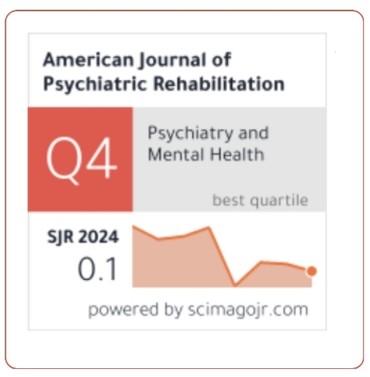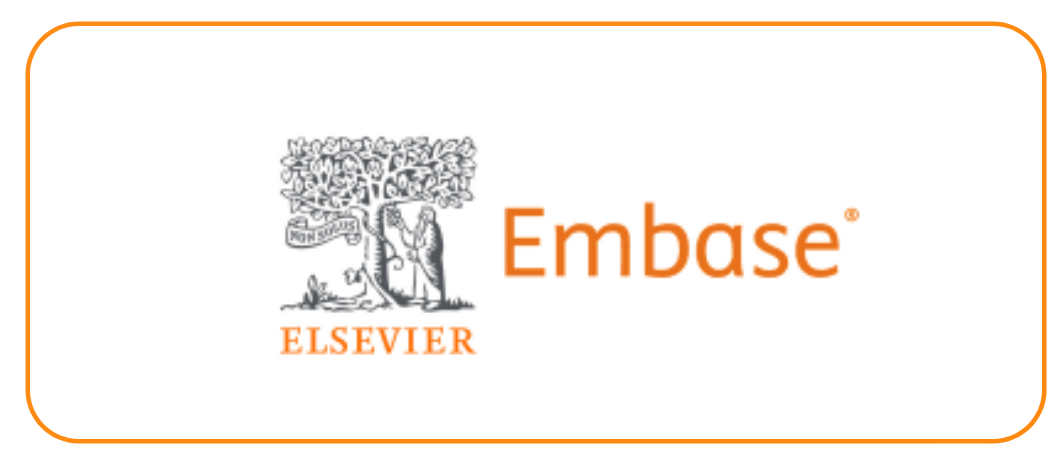Toxicity Assessment of Synthetic Polycyclic Musk: Survival, Oxidative Stress and Histopathology of Freshwater Fish Labeo rohita
DOI:
https://doi.org/10.69980/ajpr.v28i1.138Keywords:
Glaxolide, Labeo rohita, Acute toxicity, Chronic toxicity, Oxidative stress, Histopathological changesAbstract
Synthetic polycyclic musk compounds (PMCs) have been used in many industries as fragrance carriers to boost people's attractiveness found in all environmental compartments due to their uncontrolled use and high lipophilic nature, causing adverse effects on aquatic ecosystems and human health. The potential toxicity, bioaccumulation, and persistence of synthetic polycyclic musks have raised significant concerns regarding their impact on aquatic environments. The present research work investigated the toxicological responses of Labeo rohita induced by polycyclic musk compound glaxolide (HHCB). The acute toxicity evaluations regarding 96-h LC50 as well as lethal concentrations were determined as 547.86µg/L and 911.81µg/L respectively for experimental fish. After administration of sub-lethal doses of HHCB during 90 days chronic exposure, dose and time dependent oxidative stress regarding superoxide dismutase (SOD) and catalase (CAT) along with the histopathological changes in various organs of fish were evaluated. HHCB induced significant (P<0.05) dose and time dependent oxidative stress in organs of fish examined during chronic exposure. SOD enzyme activity of exposed fish was increased up to 60 days and then decreased while CAT enzyme activity was increased up to 15 days and then decreased afterward, till the end of the trial (90 days). Significant (P<0.05) alterations in the histopathology of examined organs were noted and all organs experienced detrimental changes. Meanwhile, organ tissues from unexposed groups exhibited normal and intact tissue structures. In conclusion, HHCB have substantial toxic impacts on L. rohita and increase with prolonged exposure duration.
References
1. Ashfaq, M., Li, Y., Rehman, M.S.U., Zubair, M., Mustafa, G., Nazar, M.F., Yu, C.P., Sun, Q., 2019. Occurrence, spatial variation and risk assessment of pharmaceuticals and personal care products in urban wastewater, canal surface water, and their sediments: A case study of Lahore, Pakistan. Sci. Total Environ. 688. https://doi.org/10.1016/j.scitotenv.2019.06.285
2. Balci, E., Genisoglu, M., Sofuoglu, S.C., Sofuoglu, A., 2020. Indoor air partitioning of Synthetic Musk Compounds: Gas, particulate matter, house dust, and window film. Sci. Total Environ. 729. https://doi.org/10.1016/j.scitotenv.2020.138798
3. Blahova, J., Divisova, L., Plhalova, L., Enevova, V., Hostovsky, M., Doubkova, V., Marsalek, P., Fictum, P., Svobodova, Z., 2018. Multibiomarker Responses of Juvenile Stages of Zebrafish (Danio rerio) to Subchronic Exposure to Polycyclic Musk Tonalide. Arch. Environ. Contam. Toxicol. 74. https://doi.org/10.1007/s00244-017-0484-8
4. Carlsson, G., Patring, J., Kreuger, J., Norrgren, L., Oskarsson, A., 2013. Toxicity of 15 veterinary pharmaceuticals in zebrafish (Danio rerio) embryos. Aquat. Toxicol. 126. https://doi.org/10.1016/j.aquatox.2012.10.008
5. Chae, H., Kwon, B.R., Lee, S., Moon, H.B., Choi, K., 2023. Adverse thyroid hormone and behavioral alterations induced by three frequently used synthetic musk compounds in embryo-larval zebrafish (Danio rerio). Chemosphere 324. https://doi.org/10.1016/j.chemosphere.2023.138273
6. Chane, A.D., Košnář, Z., Hřebečková, T., Wiesnerová, L., Jozífek, M., Doležal, P., Praus, L., Tlustoš, P., 2023. Bioremediation of the synthetic musk compounds Galaxolide and Tonalide by white rot fungal strain-assisted phytoremediation in biosolid-amended soil. Chemosphere 328. https://doi.org/10.1016/j.chemosphere.2023.138605
7. Chen, C., Cai, Z., 2015. Physiological and Antioxidant Responses in Wheat (Triticum aestivum) to HHCB in Soil. Bull. Environ. Contam. Toxicol. 95. https://doi.org/10.1007/s00128-015-1565-x
8. Chen, C., He, W., Ni, Z., Zhang, X., Cui, Y., Song, X., Feng, J., 2024. Bioaccumulation, trophic transfer and risk assessment of polycyclic musk in marine food webs of the Bohai Sea. Mar. Pollut. Bull. 202, 116353. https://doi.org/10.1016/j.marpolbul.2024.116353
9. Chen, C., Xue, S., Zhou, Q., Xie, X., 2011. Multilevel ecotoxicity assessment of polycyclic musk in the earthworm Eisenia fetida using traditional and molecular endpoints. Ecotoxicology 20. https://doi.org/10.1007/s10646-011-0735-9
10. Chen, F., Gao, J., Zhou, Q., 2012. Toxicity assessment of simulated urban runoff containing polycyclic musks and cadmium in Carassius auratus using oxidative stress biomarkers. Environ. Pollut. 162. https://doi.org/10.1016/j.envpol.2011.10.016
11. Chen, F., Yao, Q., Zhou, X., 2015. The influence of suspended solids on the combined toxicity of galaxolide and lead to Daphnia magna. Bull. Environ. Contam. Toxicol. 95. https://doi.org/10.1007/s00128-015-1543-3
12. Couteau, C., Coiffard, L., 2010. Regulation no 1223/2009 on cosmetic products. Nouv. Dermatologiques 29.
13. Cunha, S.C., Fernandes, J.O., Vallecillos, L., Cano-Sancho, G., Domingo, J.L., Pocurull, E., Borrull, F., Maulvault, A.L., Ferrari, F., Fernandez-Tejedor, M., Van den Heuvel, F., Kotterman, M., 2015. Co-occurrence of musk fragrances and UV-filters in seafood and macroalgae collected in European hotspots. Environ. Res. 143. https://doi.org/10.1016/j.envres.2015.05.003
14. Davies, K.J.A., 2018. FREE RADICAL BIOLOGY & MEDICINE. Author Inf. Pack 4.
15. Diao, Z., Zhang, Xue, Xu, M., Wei, F., Xie, X., Zhu, F., Hui, B., Zhang, Xiaohan, Wang, S., Yuan, X., 2024. A critical review of distribution, toxicological effects, current analytical methods and future prospects of synthetic musks in aquatic environments. Sci. Total Environ. https://doi.org/10.1016/j.scitotenv.2024.169872
16. Ding, T., Wei, L., Yue, Z., Lin, S., Li, J., 2023. Individual and combined toxicity of silver nanoparticles and triclosan or galaxolide in the freshwater algae Euglena sp. Sci. Total Environ. 887. https://doi.org/10.1016/j.scitotenv.2023.164139
17. Ebrahimi, M., Taherianfard, M., 2010. Concentration of four heavy metals (cadmium, lead, mercury, and arsenic) in organs of two cyprinid fish (Cyprinus carpio and Capoeta sp.) from the Kor River (Iran). Environ. Monit. Assess. 168. https://doi.org/10.1007/s10661-009-1135-y
18. Ehiguese, F.O., Alam, M.R., Pintado-Herrera, M.G., Araújo, C.V.M., Martin-Diaz, M.L., 2020. Potential of environmental concentrations of the musks galaxolide and tonalide to induce oxidative stress and genotoxicity in the marine environment. Mar. Environ. Res. 160. https://doi.org/10.1016/j.marenvres.2020.105019
19. Ehiguese, F.O., González-Delgado, M.J., Garrido-Perez, C., Araújo, C.V.M., Martin-Diaz, M.L., 2021. Effects and risk assessment of the polycyclic musk compounds galaxolide® and tonalide® on marine microalgae, invertebrates, and fish. Processes 9. https://doi.org/10.3390/pr9020371
20. Fernandes, D., Dimastrogiovanni, G., Blázquez, M., Porte, C., 2013. Metabolism of the polycyclic musk galaxolide and its interference with endogenous and xenobiotic metabolizing enzymes in the European sea bass (Dicentrarchus labrax). Environ. Pollut. 174. https://doi.org/10.1016/j.envpol.2012.11.033
21. Guo, G.H., Wu, F.C., He, H.P., Zhang, R.Q., Li, H.X., 2013. Screening level ecological risk assessment for synthetic musks in surface water of Lake Taihu, China. Stoch. Environ. Res. Risk Assess. 27. https://doi.org/10.1007/s00477-012-0581-1
22. Hamilton, M.A., Russo, R.C., Thurston, R. V., 1977. Trimmed Spearman-Karber Method for Estimating Median Lethal Concentrations in Toxicity Bioassays. Environ. Sci. Technol. 11. https://doi.org/10.1021/es60130a004
23. Hedayati, A., Safahieh, A., Savari, A., Marammazi, J.G., 2010. Detection of acute toxicity of mercury chloride in yellowfin sea bream (Acanthopagrus latus). Biosci. Biotechnol. Res. Asia 7.
24. HODKOVICOVA, N., ENEVOVA, V., CAHOVA, J., BLAHOVA, J., SIROKA, Z., PLHALOVA, L., DOUBKOVA, V., MARSALEK, P., FRANC, A., FIORINO, E., FAGGIO, C., TICHY, F., FALDYNA, M., SVOBODOVA, Z., 2020. Could the Musk Compound Tonalide Affect Physiological Functions and Act as an Endocrine Disruptor in Rainbow Trout? Physiol. Res. 69. https://doi.org/10.33549/physiolres.934608
25. Homem, V., Silva, E., Alves, A., Santos, L., 2015. Scented traces - Dermal exposure of synthetic musk fragrances in personal care products and environmental input assessment. Chemosphere 139. https://doi.org/10.1016/j.chemosphere.2015.06.078
26. Land, E.T., 1990. Free radicals in biology and medicine. Int. J. Radiat. Biol. 58. https://doi.org/10.1080/09553009014552071
27. Li, J., Lu, Y., Chen, H., Zheng, D., Yang, Q., Campos, L.C., 2024. Synthetic musks in the natural environment: Sources, occurrence, concentration, and fate-A review of recent developments (2010–2023). Sci. Total Environ. https://doi.org/10.1016/j.scitotenv.2024.171344
28. Li, W., Wang, S., Li, J., Wang, X., Fan, B., Gao, X., Liu, Z., 2020. Development of aquatic life criteria for tonalide (AHTN) and the ecological risk assessment. Ecotoxicol. Environ. Saf. 189. https://doi.org/10.1016/j.ecoenv.2019.109960
29. Li, X., Chu, Z., Yang, J., Li, M., Du, M., Zhao, X., Zhu, Z. (Joy), Li, Y., 2018. Synthetic Musks: A Class of Commercial Fragrance Additives in Personal Care Products (PCPs) Causing Concern as Emerging Contaminants, in: Advances in Marine Biology. https://doi.org/10.1016/bs.amb.2018.09.008
30. Li, Z., Yin, N., Liu, Q., Wang, C., Wang, T., Wang, Y., Qu, G., Liu, J., Cai, Y., Zhou, Q., Jiang, G., 2013. Effects of polycyclic musks HHCB and AHTN on steroidogenesis in H295R cells. Chemosphere 90. https://doi.org/10.1016/j.chemosphere.2012.09.056
31. Liu, S., Zhou, Q., Wang, Y., 2011. Ecotoxicological responses of the earthworm Eisenia fetida exposed to soil contaminated with HHCB. Chemosphere 83. https://doi.org/10.1016/j.chemosphere.2011.01.046
32. M, S., MY, L., PK, L., AR, K., NT, N., 2017. Current Status of Three Major Carps (Labeo rohita, Cirrhinus mrigala and Catla catla) In the Downstream Indus River, Sindh. Fish. Aquac. J. 08. https://doi.org/10.4172/2150-3508.1000222
33. Moon, H.B., Lee, D.H., Lee, Y.S., Kannan, K., 2012. Occurrence and accumulation patterns of polycyclic aromatic hydrocarbons and synthetic musk compounds in adipose tissues of Korean females. Chemosphere 86. https://doi.org/10.1016/j.chemosphere.2011.10.008
34. Peck, A.M., Hornbuckle, K.C., 2006. Synthetic musk fragrances in urban and rural air of Iowa and the Great Lakes. Atmos. Environ. 40. https://doi.org/10.1016/j.atmosenv.2006.05.058
35. Safford, B., Api, A.M., Barratt, C., Comiskey, D., Daly, E.J., Ellis, G., McNamara, C., O’Mahony, C., Robison, S., Smith, B., Thomas, R., Tozer, S., 2015. Use of an aggregate exposure model to estimate consumer exposure to fragrance ingredients in personal care and cosmetic products. Regul. Toxicol. Pharmacol. 72. https://doi.org/10.1016/j.yrtph.2015.05.017
36. Sehonova, P., Hodkovicova, N., Urbanova, M., Örn, S., Blahova, J., Svobodova, Z., Faldyna, M., Chloupek, P., Briedikova, K., Carlsson, G., 2019. Effects of antidepressants with different modes of action on early life stages of fish and amphibians. Environ. Pollut. 254. https://doi.org/10.1016/j.envpol.2019.112999
37. Vallecillos, L., Borrull, F., Pocurull, E., 2015. Recent approaches for the determination of synthetic musk fragrances in environmental samples. TrAC - Trends Anal. Chem. https://doi.org/10.1016/j.trac.2015.03.022
38. Weydert, C.J., Cullen, J.J., 2010. Measurement of superoxide dismutase, catalase and glutathione peroxidase in cultured cells and tissue. Nat. Protoc. 5. https://doi.org/10.1038/nprot.2009.197
Downloads
Published
Issue
Section
License
Copyright (c) 2025 American Journal of Psychiatric Rehabilitation

This work is licensed under a Creative Commons Attribution 4.0 International License.
This is an Open Access article distributed under the terms of the Creative Commons Attribution 4.0 International License permitting all use, distribution, and reproduction in any medium, provided the work is properly cited.









